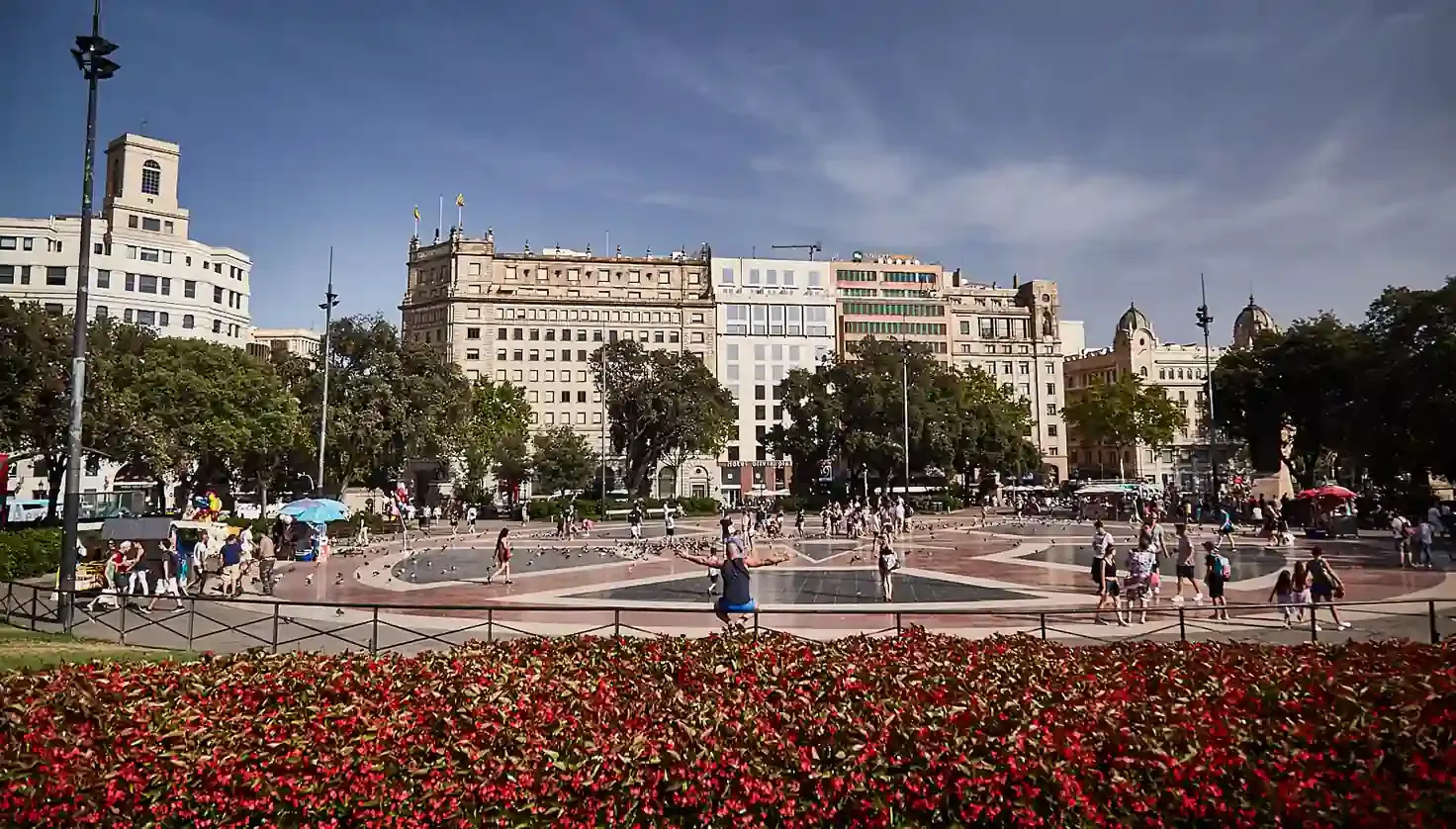La Rambla
The most famous street in Barcelona, also known as “Las Ramblas”
Located in the heart of the city’s historic center, it connects Barcelona’s Port Vell with Plaça Catalunya. You’ll find everything from flower stalls and street performers to museums and historic buildings, along with numerous cafés that bring the promenade to life from early morning until late at night.

Barcelona Bus Turístic, on the Hola Barcelona app
Your app for visiting the city with the Barcelona Bus Turístic: routes, stops and the most iconic places. A comfortable way to carry your tickets too!
An open-air show full of history
La Rambla is the most visited street by tourists, where a diversity of cultures intersect and where anything is possible.
In addition to human statues, stalls, and terraces that form the unique universe of Las Ramblas, on both sides of the promenade you’ll find some of the city’s most historic landmarks, such as the Gran Teatre del Liceu, the Boqueria Market, or Palau Güell.
Las Ramblas owes its name to the canal that carried rainwater from the mountains to the sea and crossed the city. When the city wall was built in the 15th century, the stream was diverted, and convents were built around it. Later, with the wall’s destruction, these spaces were repurposed for public use.
The origins of Barcelona’s Rambla, a long artery of the city, date back to the 18th century. In 1766, it was decided to build a wide thoroughfare following the path of the old medieval wall, which had been demolished six years earlier. Very quickly, La Rambla became one of the city’s nerve centers. People of all kinds gathered around it, as it was a wide avenue that stood out from the narrow alleys of the old neighborhoods.
La Rambla gained such notoriety that the city’s most prominent museums, theaters, and palaces were built around it, such as the Liceu Theater or the Palau de la Virreina, among other notable buildings.
To make walks more pleasant, trees were planted to provide shade. And in the 19th century, the first flower stalls were installed—many of which still exist today—along with shops, kiosks, souvenir stores, cafés, and restaurants.
The sections of La Rambla
La Rambla has different names depending on the section, which is why some refer to it as “Las Ramblas.” If you walk from Plaça Catalunya to the Columbus Monument, you’ll discover:
- La Rambla de Canaletes, with the famous Canaletes Fountain, where Barça fans gather to celebrate their victories. Tradition says that anyone who drinks from this fountain will return to Barcelona.
- La Rambla dels Estudis, named after the Estudi General or University that stood there in the 15th century. It’s also known as the Rambla dels Ocells (Birds’ Rambla), as it once hosted the Bird Market. Here you’ll find the baroque Church of Betlem (1729), Palau Moja (1784), and the modernist building of the Royal Academy of Sciences and Arts (1894), which includes a small astronomical observatory and a clock that marks Barcelona’s official time.
- La Rambla de Sant Josep or de les Flors, the only place in the city where flowers were sold in the 19th century—a tradition that continues today. Here you’ll find the famous Boqueria Market and Spain’s only Erotic Museum. Also located here are the Palau de la Virreina (1778) and the popular “Casa dels Paraigües” (House of Umbrellas), with its curious Japanese-inspired decoration from 1858.
- La Rambla dels Caputxins (or Rambla del Centre), named after the Capuchin friars’ convent, stretches from the Gran Teatre del Liceu to the Pla del Teatre. It’s the oldest section of La Rambla opened as a promenade, and you’ll find the Miró mosaic, Palau Güell, the Hotel Oriente (the city’s oldest), and Plaça Reial, where the convent that gave the section its name once stood.
- La Rambla de Santa Mònica, near the port, is home to the Santa Mònica parish, Palau Marc (1781), the old cannon foundry (1777)—where the largest bell of Barcelona Cathedral was cast—and, at the end of the promenade, the Columbus Monument. This is also where you’ll find the much-photographed human statues.
How to get to La Rambla?
You can reach it from the Plaça Catalunya stop on the Blue and Red Routes of the Barcelona Tourist Bus, which drops you right next to Las Ramblas. There’s also the Colom-Maritime Museum stop on the Red Route, allowing you to walk the promenade from Port Vell.
For the curious
- From the late 18th century to the early 21st century, tradition dictated sitting on La Rambla to watch people go by. In 1781, chairs were already being rented at the Pla de la Boqueria, and from 1860, Casa Gay installed chairs along the entire promenade. The most popular were those near the Canaletes Fountain, which disappeared in 2000.
- If you visit Barcelona during the Sant Jordi festival, don’t miss the book and rose stalls on La Rambla.











